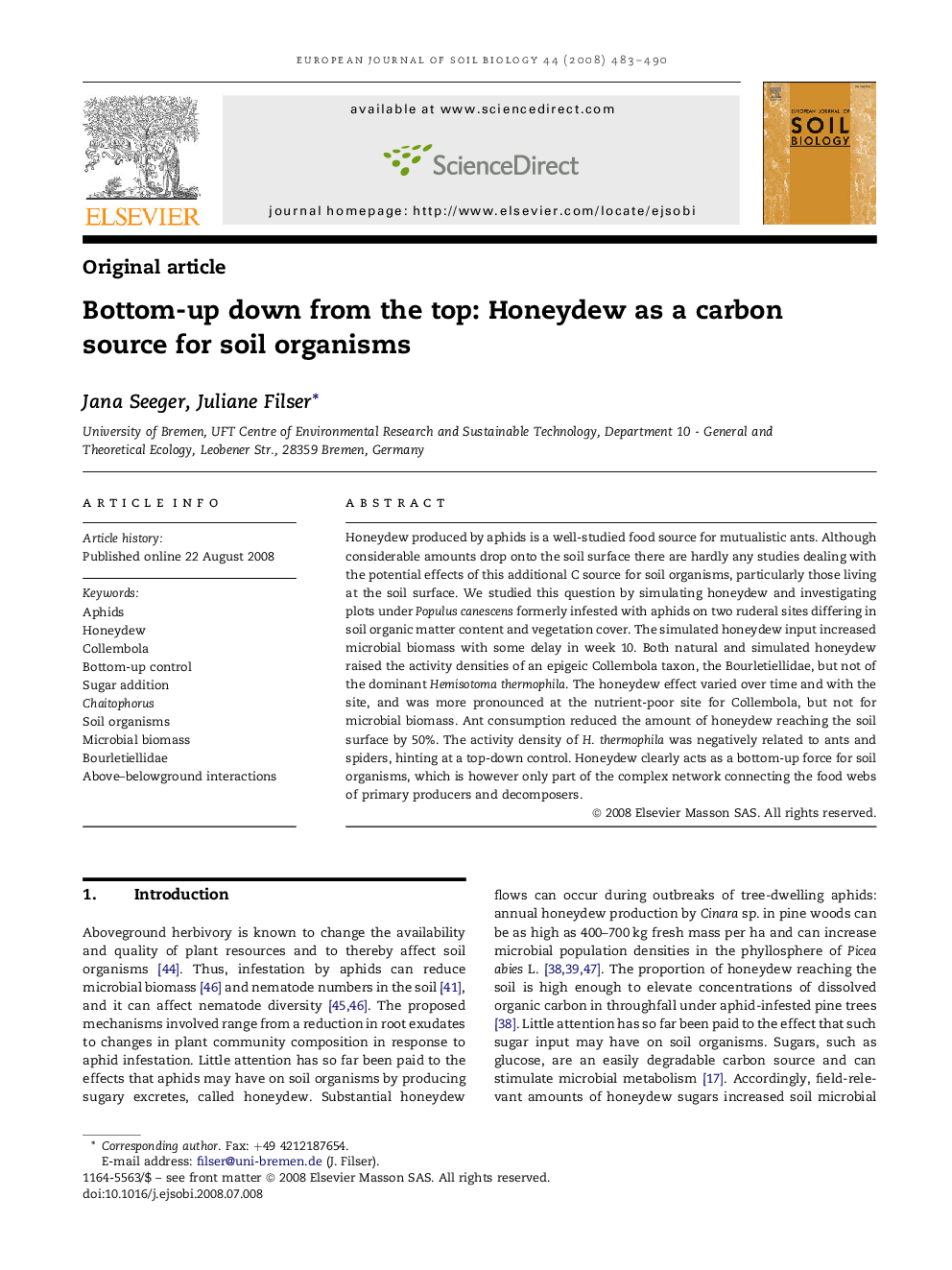| Article ID | Journal | Published Year | Pages | File Type |
|---|---|---|---|---|
| 4392375 | European Journal of Soil Biology | 2008 | 8 Pages |
Honeydew produced by aphids is a well-studied food source for mutualistic ants. Although considerable amounts drop onto the soil surface there are hardly any studies dealing with the potential effects of this additional C source for soil organisms, particularly those living at the soil surface. We studied this question by simulating honeydew and investigating plots under Populus canescens formerly infested with aphids on two ruderal sites differing in soil organic matter content and vegetation cover. The simulated honeydew input increased microbial biomass with some delay in week 10. Both natural and simulated honeydew raised the activity densities of an epigeic Collembola taxon, the Bourletiellidae, but not of the dominant Hemisotoma thermophila. The honeydew effect varied over time and with the site, and was more pronounced at the nutrient-poor site for Collembola, but not for microbial biomass. Ant consumption reduced the amount of honeydew reaching the soil surface by 50%. The activity density of H. thermophila was negatively related to ants and spiders, hinting at a top-down control. Honeydew clearly acts as a bottom-up force for soil organisms, which is however only part of the complex network connecting the food webs of primary producers and decomposers.
